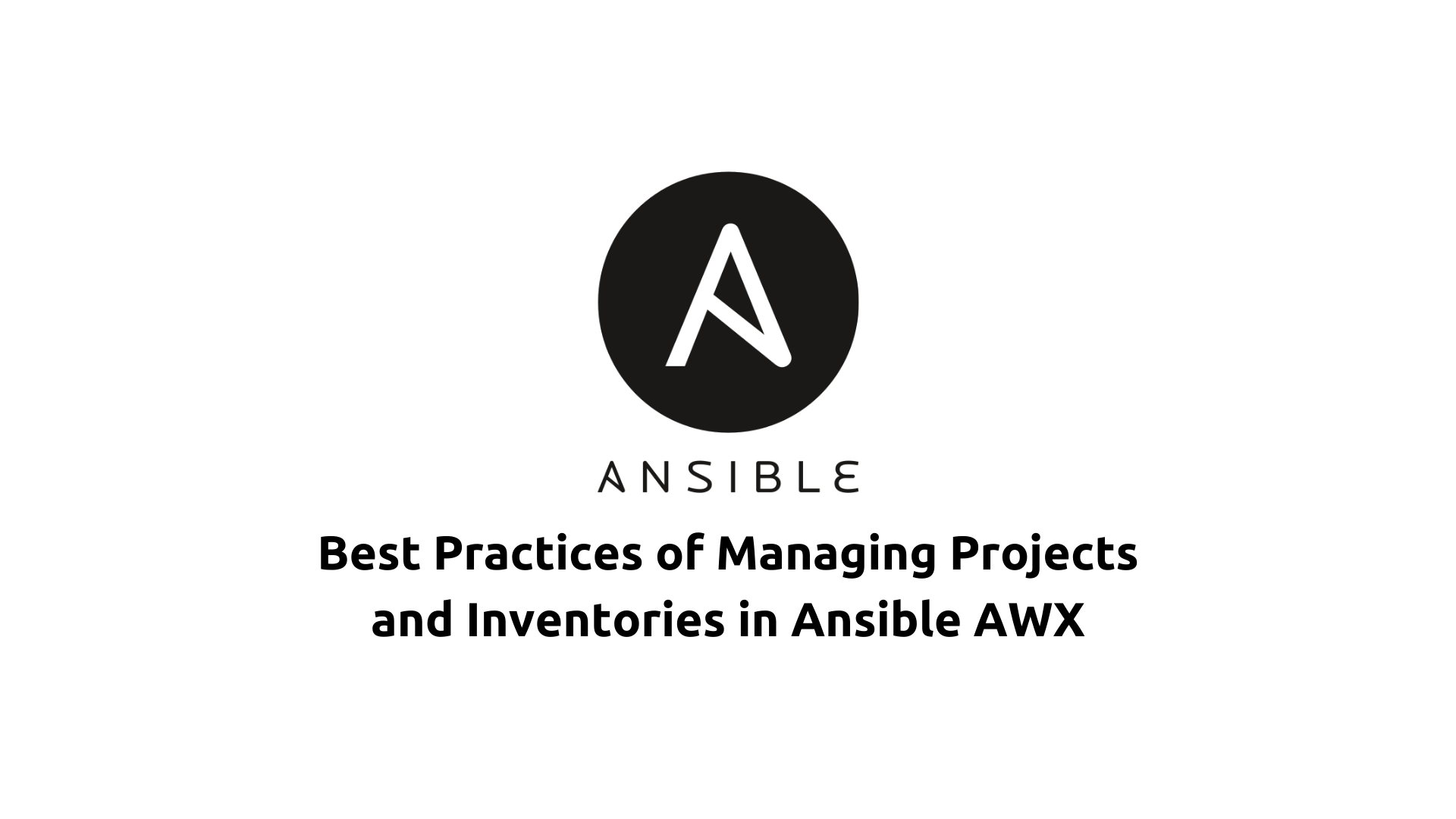Best Practices of Managing Projects and Inventories in Ansible AWX
 Saurabh Adhau
Saurabh Adhau
Introduction
Managing projects and inventories efficiently in Ansible AWX is essential for ensuring streamlined automation workflows. In this article, we'll delve into best practices for managing projects and inventories in Ansible AWX, along with detailed examples illustrating each practice. By implementing these best practices, users can enhance visibility, control, and collaboration across their automation workflows.
1. Standardization:
Establishing standard naming conventions and descriptions for projects and inventories is crucial for maintaining consistency and clarity in Ansible AWX. Consistent naming conventions make it easier for users to identify and understand the purpose of projects and inventories.
Example:
Let's consider a scenario where we have multiple projects and inventories in Ansible AWX. We adopt the following naming conventions:
Projects: Use the format "project_name" for projects. For example, "web_app" for a project deploying a web application.
Inventories: Use the format "inventory_name" for inventories. For example, "web_servers" for an inventory containing web servers.
By adhering to these naming conventions consistently across projects and inventories, users can easily identify and understand their purpose, improving overall organization and management.
2. Documentation:
Thorough documentation of projects and inventories is essential for providing insights into their purpose, structure, dependencies, and configuration in Ansible AWX. Detailed documentation ensures that users have the necessary information to understand and utilize projects and inventories effectively.
Example:
Suppose we have a project named "web_app" in Ansible AWX. We maintain detailed documentation for this project, including:
Purpose: Deploying a web application.
Structure: Directory structure of the project, including playbooks, roles, and variables.
Dependencies: External dependencies required for executing playbooks.
Configuration: Configuration settings for synchronizing the project with the Git repository.
By documenting this information thoroughly, users can gain insights into the "web_app" project, facilitating its usage and management within Ansible AWX.
3. Version Control:
Integrating projects with version control systems such as Git ensures versioning, history tracking, and collaboration in Ansible AWX. Version control enables users to track changes made to projects, collaborate with team members, and revert to previous versions if necessary.
Example:
Consider the "web_app" project integrated with a Git repository in Ansible AWX. Users make changes to the project's playbooks and commit them to the Git repository. Version control allows users to:
Track Changes: View commit history to track changes made to playbooks over time.
Collaboration: Collaborate with team members by sharing the Git repository and managing branches.
Rollback: Revert to previous versions of playbooks if a change introduces unexpected issues.
By leveraging version control, users can maintain a structured approach to managing changes in projects and collaborate effectively within Ansible AWX.
4. Dynamic Inventory:
Utilizing dynamic inventory sources enables the automatic generation of inventories from external sources such as cloud providers or configuration management databases. Dynamic inventory simplifies inventory management and ensures that inventories remain up-to-date with infrastructure changes.
Example:
Suppose we have an inventory named "web_servers" in Ansible AWX containing web servers. Instead of manually maintaining the list of servers, we utilize a dynamic inventory script that automatically generates the inventory from an external source such as an AWS EC2 instance.
Dynamic Inventory Script: Generates the inventory dynamically based on EC2 instances tagged with "web_server."
Automation: The dynamic inventory script runs periodically to synchronize the inventory with changes in the AWS environment.
Scalability: The inventory automatically scales with infrastructure changes, ensuring that new servers are added to the inventory dynamically.
By leveraging dynamic inventory, users can streamline inventory management and ensure that inventories remain accurate and up-to-date in Ansible AWX.
Conclusion
Implementing best practices for managing projects and inventories in Ansible AWX enhances visibility, control, and collaboration across automation workflows. By standardizing naming conventions, documenting projects and inventories, integrating with version control, and utilizing dynamic inventory, users can effectively manage projects and inventories in Ansible AWX, improving efficiency and reliability of automation tasks.
Subscribe to my newsletter
Read articles from Saurabh Adhau directly inside your inbox. Subscribe to the newsletter, and don't miss out.
Written by

Saurabh Adhau
Saurabh Adhau
As a DevOps Engineer, I thrive in the cloud and command a vast arsenal of tools and technologies: ☁️ AWS and Azure Cloud: Where the sky is the limit, I ensure applications soar. 🔨 DevOps Toolbelt: Git, GitHub, GitLab – I master them all for smooth development workflows. 🧱 Infrastructure as Code: Terraform and Ansible sculpt infrastructure like a masterpiece. 🐳 Containerization: With Docker, I package applications for effortless deployment. 🚀 Orchestration: Kubernetes conducts my application symphonies. 🌐 Web Servers: Nginx and Apache, my trusted gatekeepers of the web.